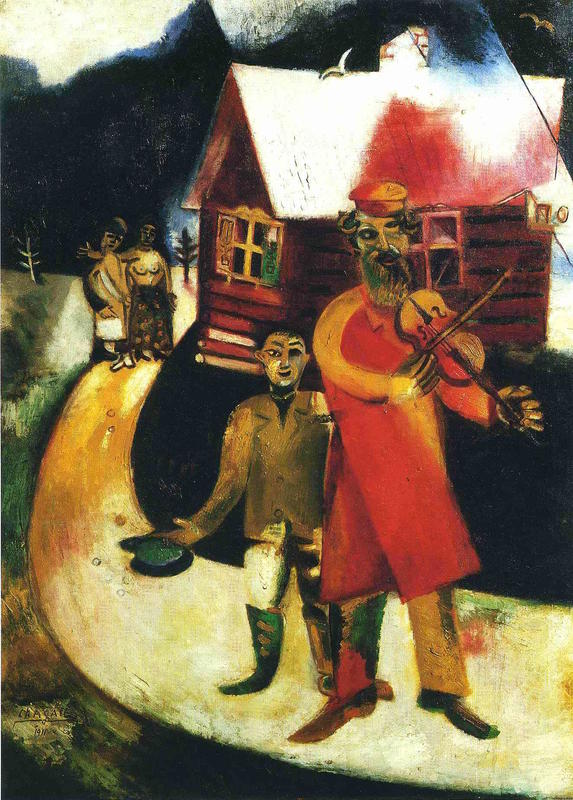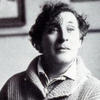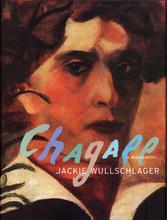More about The Violinist
- All
- Info
- Shop

Contributor
Marc Chagall is a guy known for his mix of childhood whimsy and native Russian folklore, but this is a far cry from his typical flying couples and giant chickens.
This work, depressing as it may be, is a depiction of a street in Chagall’s hometown of Vitebsk, Russia, which had always been a paradox for the artist. Home was a sad place, not just because it was stuck in the past and looked downtrodden, but also because it was a place where Chagall and his family were often victims of antisemitic prejudice. Despite the depressing discrimination, home was still a place that Chagall had nothing but happy memories of, including memories of climbing the walls in his family’s garden to soak in the sights of the small town beyond.
As the political climate began to change in Russia during the early 1900s and general feelings towards Jews began to turn sour with the tremors of World War I, Chagall found that his creative talents were stifled in Russia (mostly because nobody wanted to buy work from a Jewish artist), so Chagall electively exiled himself from Russia and moved to Paris in 1911. No matter how much Chagall loved Paris, he always called it the place that he had been exiled to.
In Paris, though, Chagall felt like he could finally express the childlike joy that he felt when he thought of Vitebsk. From Paris his works depicting memories of home became more grounded (literally) than the border-line surrealist works that he made in Russia.
Though he had ample opportunity and ammunition to, Chagall never painted to criticize society. Hence why, despite the boob-alicious hooker flaunting her wares to put food on the table in the background and the poor Jewish violinist playing music while his young companion begs for change, the subjects of this work are happy. His subjects lives may seem sad to us, but Chagall’s personal memories of them are whose of a happy and functional community.
Despite the hardships that Chagall faced as a Russian Jew in Vitebsk, the Jewish people and the small town continued to be Chagall’s muse throughout his career and Jewish heritage remained a pivotal part of Chagall’s identity. Eventually Chagall would return to Vitebsk and actually became a government official there with the Communist party, but he forever remained “the wandering Jew” and never found home anywhere outside of his childhood memories.
Sources
- Harmon, Kristine. 2005. "Self-Exile and the Career of Marc Chagall." Hedgehog Review 7, no. 3: 60-66. Humanities International Complete, EBSCOhost (accessed May 13, 2017).
- Internetagentur bonn köln sunzinet typo3 und reddot programmmierung. "Le violoniste." Kunstsammlung NRW. Accessed May 09, 2017. http://www.kunstsammlung.de/entdecken/sammlung/emuseum-sammlung.html?fr…
- "Marc Chagall." The Art Story. Accessed May 09, 2017. http://www.theartstory.org/artist-chagall-marc.htm.












